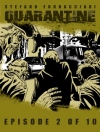I think murder is practically a certainty.
William Weddall was eccentric even in Ludovic Traver’s wide experience. There was about him an aura of secrecy and subterfuge at odds with the quiet atmosphere of his estate. Hinchbrook Hall, show-place for his antiques and paintings. He had sent Travers to Paris on the seemingly pointless errand of mailing a letter. And Travers later saw him deliberately miss a boat.
Then William Weddall plunged from a window to his death. A running man was seen leaving Hinchbrook Hall after the fatal accident, a man identifiable only by the scar on his chin. Weddall’s American chauffeur, Sam, asked Travers to investigate. It was Sam’s guess that Weddall was pushed. Suave and urbane, with a connoisseur’s eye for antiques, Travers stepped in.
An unwholesome nephew, an ambitious housekeeper, faked-antique swindles in a Bohemian underworld-these are the elements that combine to give Christopher Bush’s 52nd mystery an electric atmosphere of suspense.
The Case of the Running Man was originally published in 1958. This new edition features an introduction by crime fiction historian Curtis Evans.
‘Throws incidental information on art and antiques into an ingenious plot as Ludovic Travers pursues the murderer of a collector.’ Daily Telegraph
‘As neatly fashioned a puzzle as Ludovic Travers has ever tackled.’ Guardian
Giới thiệu về tác giả
Christopher Bush was born Charlie Christmas Bush in Norfolk in 1885. His father was a farm labourer and his mother a milliner. In the early years of his childhood he lived with his aunt and uncle in London before returning to Norfolk aged seven, later winning a scholarship to Thetford Grammar School.As an adult, Bush worked as a schoolmaster for 27 years, pausing only to fight in World War One, until retiring aged 46 in 1931 to be a full-time novelist. His first novel featuring the eccentric Ludovic Travers was published in 1926, and was followed by 62 additional Travers mysteries. These are all to be republished by Dean Street Press.Christopher Bush fought again in World War Two, and was elected a member of the prestigious Detection Club. He died in 1973.












